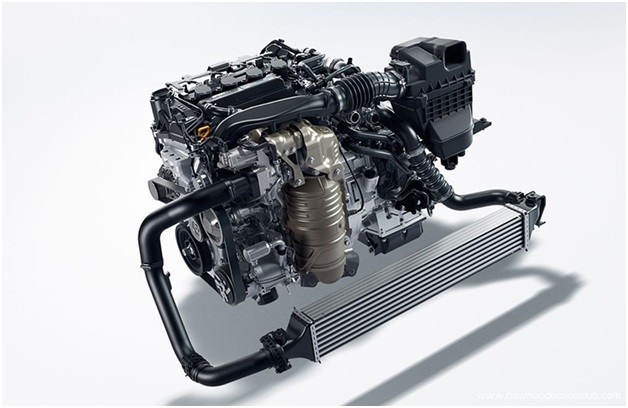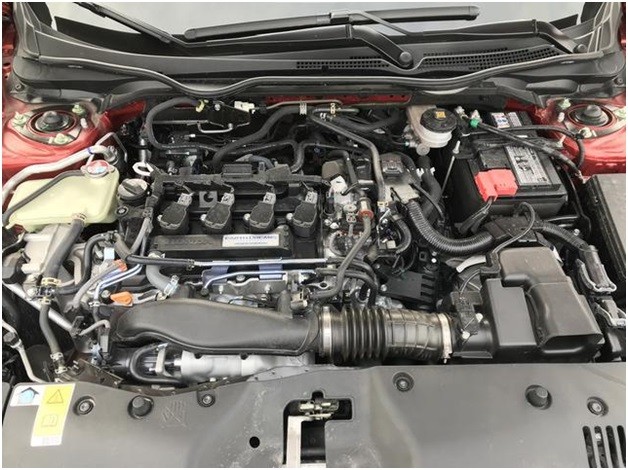
Honda L15A, L15B, L15C engines
Content
With the introduction of the brand's youngest model and fellow Civic, the Fit (Jazz) compact car, Honda launched a new family of "L" petrol units, the largest of which are representatives of the L15 line. The motor replaced the rather popular D15, which was slightly larger in size.
In this 1.5L engine, Honda engineers used a 220mm high aluminum BC, an 89.4mm stroke crankshaft (26.15mm compression height) and 149mm long connecting rods.
Sixteen-valve L15s are equipped with a VTEC system that operates at 3400 rpm. The extended intake manifold is optimized for mid-range operation. The exhaust with the EGR system is made of stainless steel.
There are variations of the L15 with the proprietary i-DSi (intelligent dual sequential ignition) system with two candles diagonally opposite each other. These engines were specifically designed to save gas and reduce emissions, and after the Fit they migrated to other models from Honda, notably the Mobilio and City.
In addition to the fact that there are 8- and 16-valve L15s, they are also available with both single and double camshafts. Some modifications of this engine are equipped with turbocharging, PGM-FI and i-VTEC system. In addition, Honda also has hybrid variations of the L15 engine - LEA and LEB.
The engine numbers are on the cylinder block at the bottom right when viewed from the hood.
L15A
Among the modifications of the L15A engine (A1 and A2), it is worth highlighting the L15A7 unit with a 2-stage i-VTEC system, the serial production of which began in 2007. The L15A7 received updated pistons and lighter connecting rods, larger valves and lighter rockers, as well as a revised cooling system and improved manifolds.
The 15-liter L1.5A was installed on Fit, Mobilio, Partner and other Honda models.
Main characteristics of L15A:
| Volume cm3 | 1496 |
| Power, hp | 90-120 |
| Max torque, Nm (kgm)/rpm | 131(13)/2700; 142(14)/4800; 143(15)/4800; 144(15)/4800; 145(15)/4800. |
| Fuel consumption, l / 100 km | 4.9-8.1 |
| A type | 4-cylinder, 8-valve, SOHC |
| D cylinder, mm | 73 |
| Max power, hp (kW)/r/min | 90(66)/5500; 109(80)/5800; 110(81)/5800; 117(86)/6600; 118(87)/6600; 120(88)/6600. |
| Compression ratio | 10.4-11 |
| The piston stroke, mm | 89.4 |
| Models | Airwave, Fit, Fit Aria, Fit Shuttle, Freed, Freed Spike, Mobilio, Mobilio Spike, Partner |
| Resource, outside. km | 300+ |
L15B
Standing apart in the L15B line are two forced vehicles: L15B Turbo (L15B7) and L15B7 Civic Si (modified version of L15B7) - turbocharged stock engines with direct fuel injection.
The 15-liter L1.5B was installed on Civic, Fit, Freed, Stepwgn, Vezel and other Honda models.
Main characteristics of L15B:
| Volume cm3 | 1496 |
|---|---|
| Power, hp | 130-173 |
| Max torque, Nm (kgm)/rpm | 155(16)/4600; 203(21)/5000; 220 (22) / 5500 |
| Fuel consumption, l / 100 km | 4.9-6.7 |
| A type | 4-cylinder, SOHC (DOHC - in the turbo version) |
| D cylinder, mm | 73 |
| Max power, hp (kW)/r/min | 130(96)/6800; 131(96)/6600; 132(97)/6600; 150(110)/5500; 173(127)/5500. |
| Compression ratio | 11.5 (10.6 - in the turbo version) |
| The piston stroke, mm | 89.5 (89.4 - in the turbo version) |
| Models | Civic, Fit, Freed, Freed+, Grace, Jade, Shuttle, Stepwgn, Fiber |
| Resource, outside. km | 300+ |
L15C
The turbocharged L15C engine, equipped with PGM-FI programmable fuel injection, took pride of place among the power plants for the 10th generation Honda Civic (FK) hatchback.
The turbocharged 15-liter L1.5C engine was installed in the Civic.
Main characteristics of L15C:
| Volume cm3 | 1496 |
| Power, hp | 182 |
| Max torque, Nm (kgm)/rpm | 220(22)/5000; 240(24)/5500. |
| Fuel consumption, l / 100 km | 05.07.2018 |
| A type | in-line, 4-cylinder, DOHC |
| D cylinder, mm | 73 |
| Max power, hp (kW)/r/min | 182 (134) / 5500 |
| Compression ratio | 10.6 |
| The piston stroke, mm | 89.4 |
| Models | Civic |
| Resource, outside. km | 300+ |
Advantages, disadvantages and maintainability of the L15A / B / C
The reliability of the 1.5-liter engines of the "L" family is at the proper level. In these units, everything is extremely simple and they serve without any problems.
Pros:
- VTEC;
- i-DSI systems;
- PGM-FI;
Cons
- Ignition system
- Maintainability.
On engines with an i-DSI system, all spark plugs should be replaced as needed. Otherwise, everything is as usual - timely maintenance, the use of high-quality consumables and oils. The timing chain does not require additional maintenance, except for periodic visual inspection during its entire service life.
Although the L15 is not the best in terms of maintainability, all the design solutions used by Honda mechanics allow these engines to have a huge margin of safety to withstand the most common maintenance errors.
Tuning L15
Tuning engines of the L15 series is a rather dubious task, because today there are a lot of cars with more powerful units, including those equipped with a turbine, but if you want to add "horses" to the same L15A, you will have to port the cylinder head, install a cold intake, an enlarged damper, a manifold " 4-2-1" and forward flow. Once tuned to Honda's VTEC-enabled Greddy E-manage Ultimate sub-computer, 135 hp can be achieved.
L15B Turbo
Honda owners with a turbocharged L15B7 can be recommended to do chip tuning and thereby raise the boost to 1.6 bar, which will eventually allow you to get up to 200 “horses” on wheels.
The system of cold air supply to the intake manifold, front intercooler, tuned exhaust system and the “brains” of Hondata will give about 215 hp.
If you put a turbo kit on the naturally aspirated L15B engine, you can inflate up to 200 hp, and this is exactly the maximum that a regular stock L15 engine holds.
Conclusion
The L15 series engines did not come at the best of times for Honda. At the turn of the century, the Japanese automaker found itself in stagnation, since the structurally perfect, old power units were impossible to surpass from a technical point of view. However, the company's potential customers wanted innovations, which were intensively offered by competitors. And Honda was saved only by such hits as the CR-V, HR-V and Civic, starting to think about a new generation of subcompacts. That is why there was an extensive family of L-engines, which were originally conceived for the new Fit model, the sales stakes of which were very high.
L-motors can rightly be considered one of the most sought after in the history of Honda. Of course, from the point of view of maintainability, these engines are significantly inferior to the power plants of the last century, however, there are much fewer problems with them.
The frequency of scheduled maintenance intervals and the endurance of the L-series are also inferior to the "old men" such as the legendary representatives of the D- and B-lines, but before the units were not required to comply with so many environmental standards and economy.

